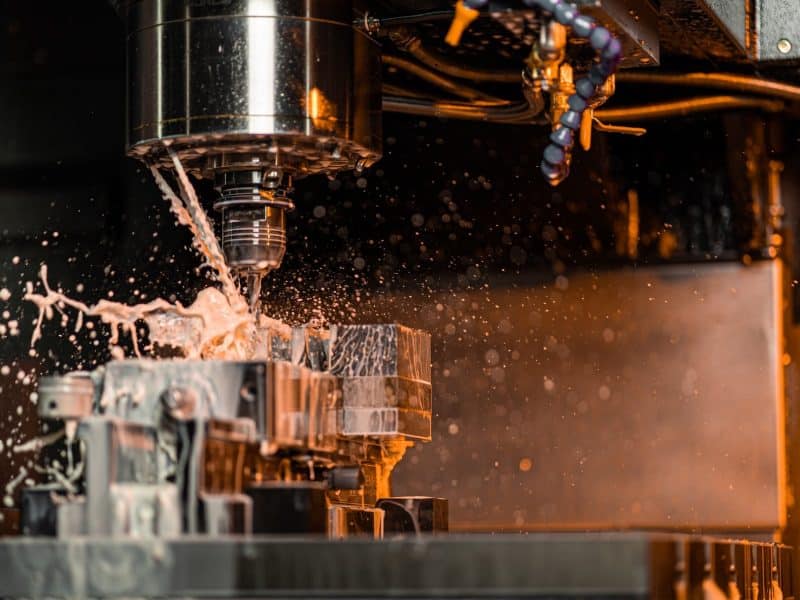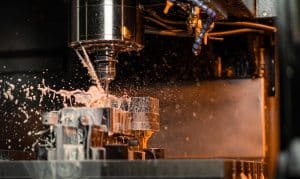
Table of Contents
How to process from CAD To CNC Production?
Computer-aided design or CAD is the use of computers to help the formation, modification, function, analysis, or application of your design. With CAD software, you can increase the productivity of designs and their overall quality.
So, if you’re working with computer design or within the manufacturing sector, computer-aided-design software is essential. CAD is actually the first step in manufacturing. From there, you can take the design to one of the impressive technological manufacturing techniques, including various forms of CNC machining like CNC milling or CNC turning, injection molding, or 3D printing to manufacture your initial design. In this article, we’ll focus on getting your CAD file ready for CNC machining.
In CNC machining, numerical control technology manages the machine’s work, whereby a software program is pre-made to control an object. The language behind CNC machining is called a G-code, and it’s written to manage the speed, feed rate, and coordination of the CNC machine.

This article guides you through every step you should follow to properly prepare your CAD files for the next step, presumably CNC machining. Keep reading below to understand more about the process through our step-by-step guide.
XTJ is a leading OEM Manufacturer that is dedicated to providing one-stop manufacturing solutions from prototype to production. We are proud to be an ISO 9001 certified system quality management company and we are determined to create value in every customer relationship. We do that through collaboration, innovation, process improvements, and exceptional workmanship.
Prepare Your CAD Files For Instant CNC Pricing
First of all, the cost for CNC is versatile and often subjective. Suppliers usually have different views on the difficulty of manufacturing an object. None of them can be sure what the precise final pricing will be before they machine it.
However, this no longer has to be the case. Online manufacturing platforms are now utilizing AI-driven automatic systems to supply a quote in real time. Given the order’s information – part’s geometry, material, and quantity, the AI algorithms can successfully forecast the pricing of manufacturing a part instantly.
In the past, the cost of machining was heavily dependent on the ability and insight of the machinists. Today’s pricing in an AI-driven sourcing program closely resembles the stock market. The buyer (the engineer or the company that wants to manufacture the final part) and the seller (the manufacturer) can easily reach an agreement on the market cost in real time using the AI systems of supply and demand.
Things get very interesting if you pair automated real-time pricing with an AI-sourcing system that simplifies the way manufacturers can accept incoming orders. This way, engineers get their designed objects from CAD to production in less than ten minutes, and manufacturers can fully exploit their production capability.
Assuming that you have already optimized your design for CNC production, the steps you should follow are:
Export your design in a CNC-compatible format;
Prepare a technical drawing;
Get a quote from an online service.
Let’s study each of these three steps in further detail to examine the best practices.
Export Your Design To A CNC-Compatible CAD File Format
CNC Illustration
The file formats usually used in CNC machining are STEP and IGES. These formats are publicly available and standardized, and you can use them across platforms. Some manufacturing services also accept 3D designs in other file formats like 3DM, IPT, SLDPRT, SAT, and X_T.
These are also convenient, but keep in mind that your designs will be converted into the STEP format at one point during the manufacturing process. The best practice is to export your designs as STEP directly from your CAD software. This way, you can examine them before uploading to ensure there is no possibility for a conversion error.
Prepare Your Technical Drawing
CNC Technical Drawing
Current CNC machining systems can read the part’s geometry directly from the 3D CAD file with the on-board computer or from the G-code output of the CAM (Computer-aided manufacturing) software. In this regard, a 2D drawing is not necessary to create a part with CNC machining.
Still, you should include a technical drawing in your order as it contains information that is not readable in a STEP file. For example, you need a technical drawing when your design includes threads, when tolerances and critical dimensions are determined or when some surfaces need a specific finish.
Even if your design doesn’t include these components, it’s mostly a good practice to present a 2D drawing when submitting a CNC order. Many CNC machinists prefer technical drawings over 3D CAD files because it’s simpler to recognize the main dimensions, functions, and critical characteristics of an object, it’s also easier to evaluate the machining operations they perform in the machining process and in case of a dispute, the manufacturers use the technical drawing as the ‘truth’s source.’
If you want to learn more about preparing a technical drawing for CNC fabrication, you can follow these detailed instructions. Make sure you:
Define and position the most critical views of the part;
Consider adding sectional views if your part has concealed geometries;
Include auxiliary lines (center lines, center marks, and center mark patterns);
Add dimensions, begin with the most critical ones first;
Identify the exact size and location of all threads;
Include tolerances (or the standard tolerance will be ±.125 mm);
Get A CNC Machining Quote Online
It’s already well-known how online manufacturing networks make it simpler than ever to source your CNC production parts. All you have to do to obtain an instant quote is to upload your 3D files in a supported format, specify your requirements – choose the material, quantity, and processing time, and define any additional manufacturing requirements and get an instant quote and start manufacturing.
This innovative technology will save companies time and money while at the same time offering them a competitive edge. As technology accelerates more, it won’t be the strongest or biggest companies that flourish, but the ones capable of adapting rapidly to the new transformation.
Final Words
We hope you already got a better understanding by now of the in-between procedures from CAD to CNC machining with this thorough step-by-step guide. However, in case you are still having some questions regarding the overall procedure, make sure to address some of your questions to your machining supplier or get some additional video tutorials online for CAD design. You can always consult a CAD professional and hire an outsourcing service for your engineering drawings.
XTJ is a leading OEM Manufacturer that is dedicated to providing one-stop manufacturing solutions from prototype to production. We are proud to be an ISO 9001 certified system quality management company and we are determined to create value in every customer relationship. We do that through collaboration, innovation, process improvements, and exceptional workmanship.

